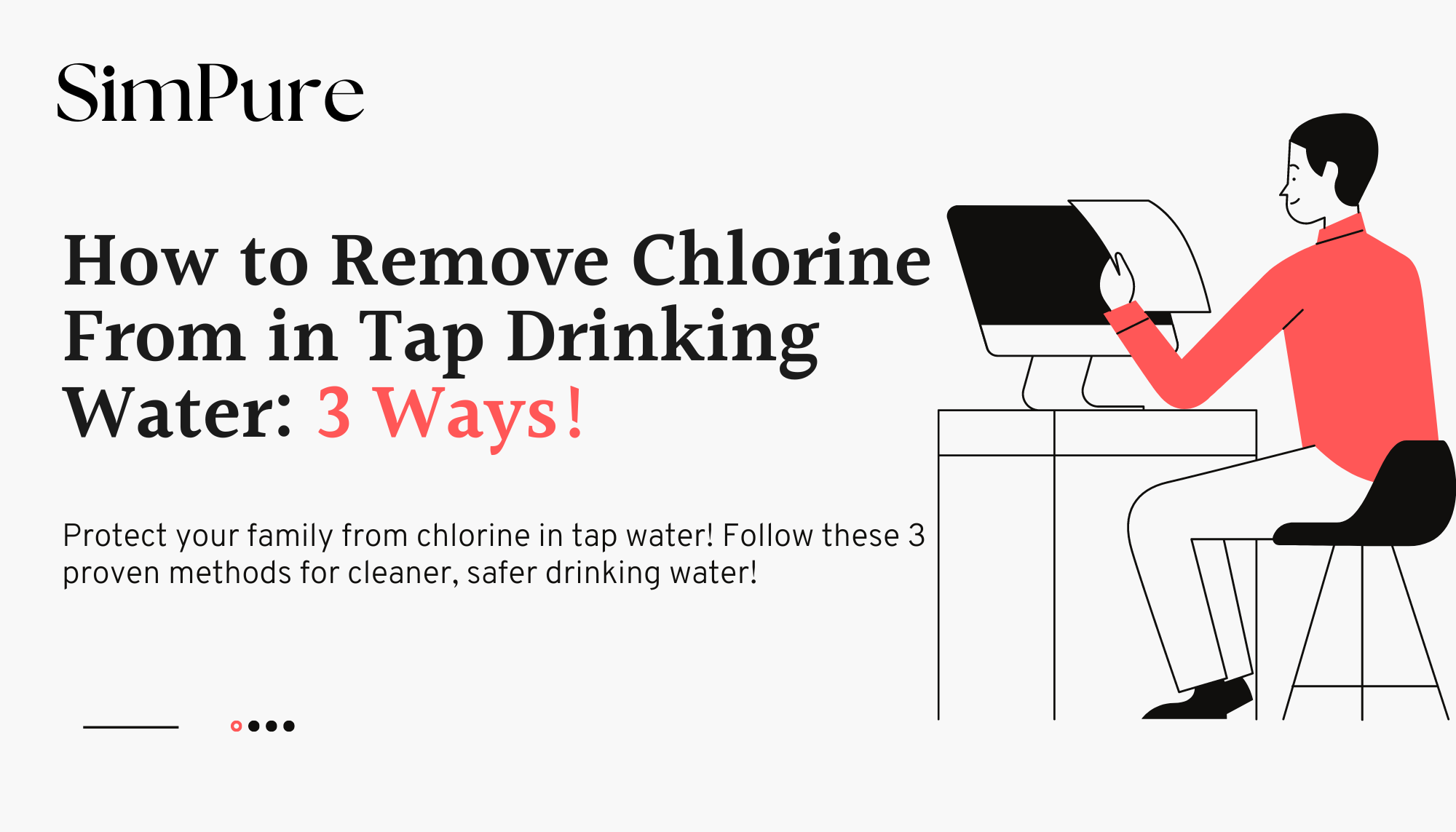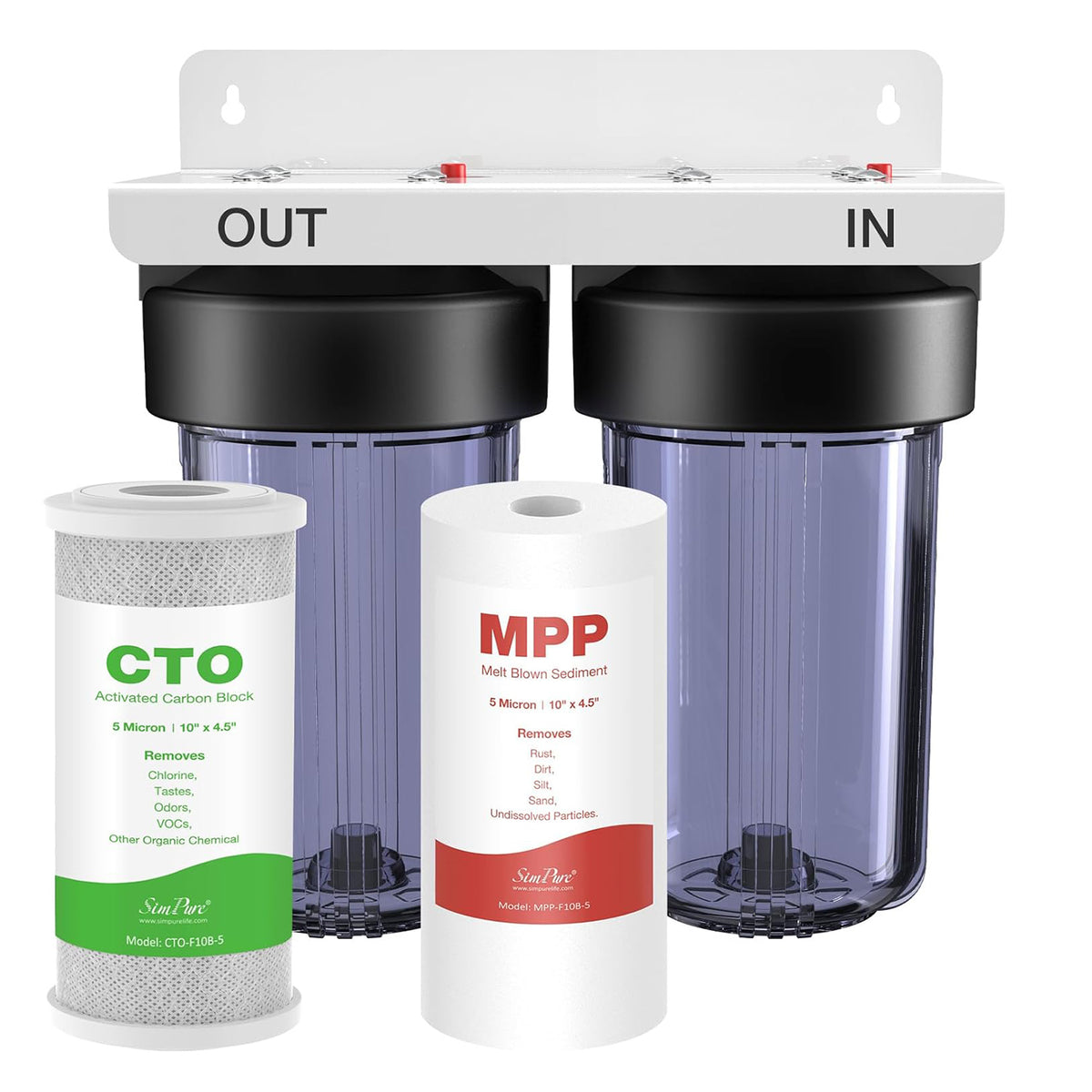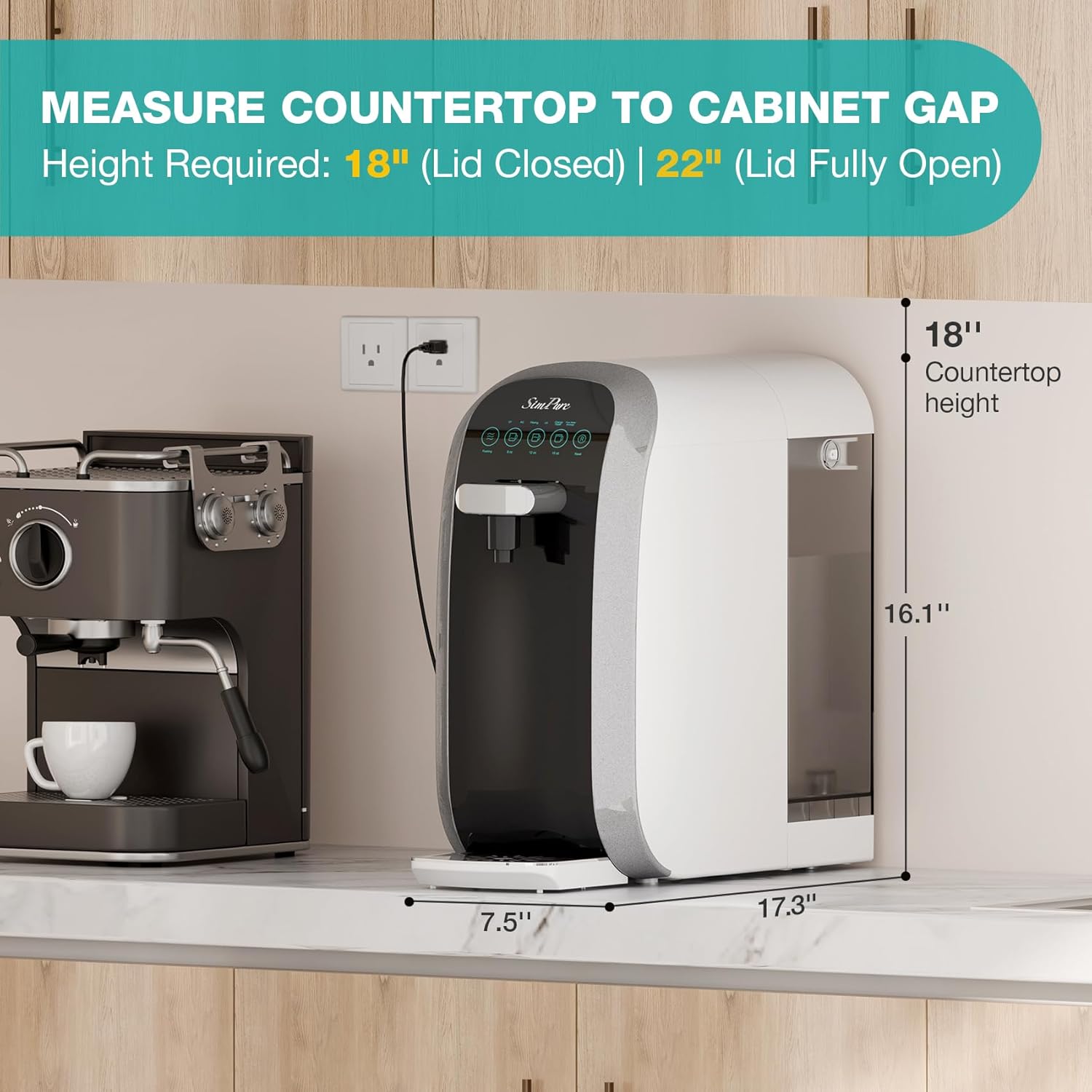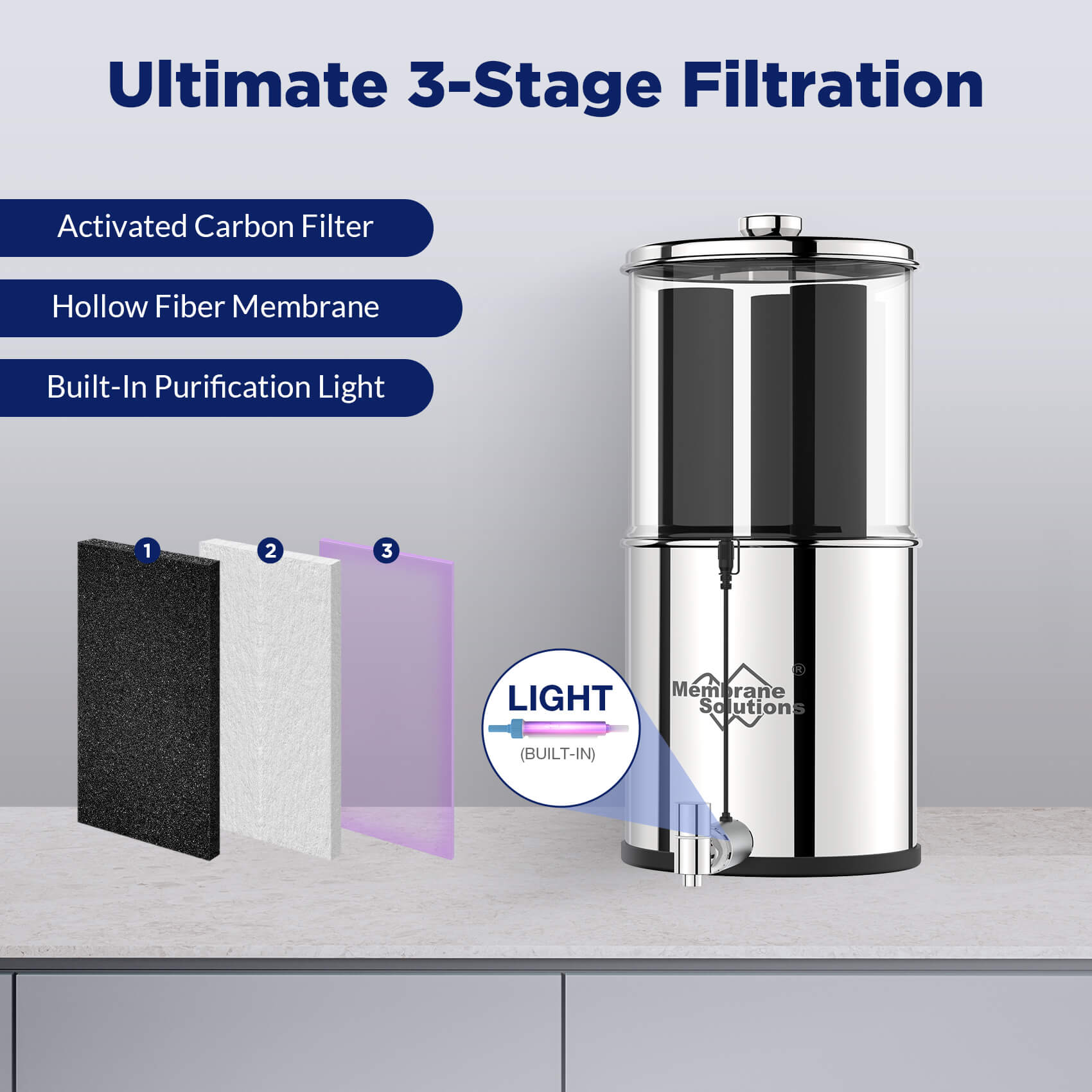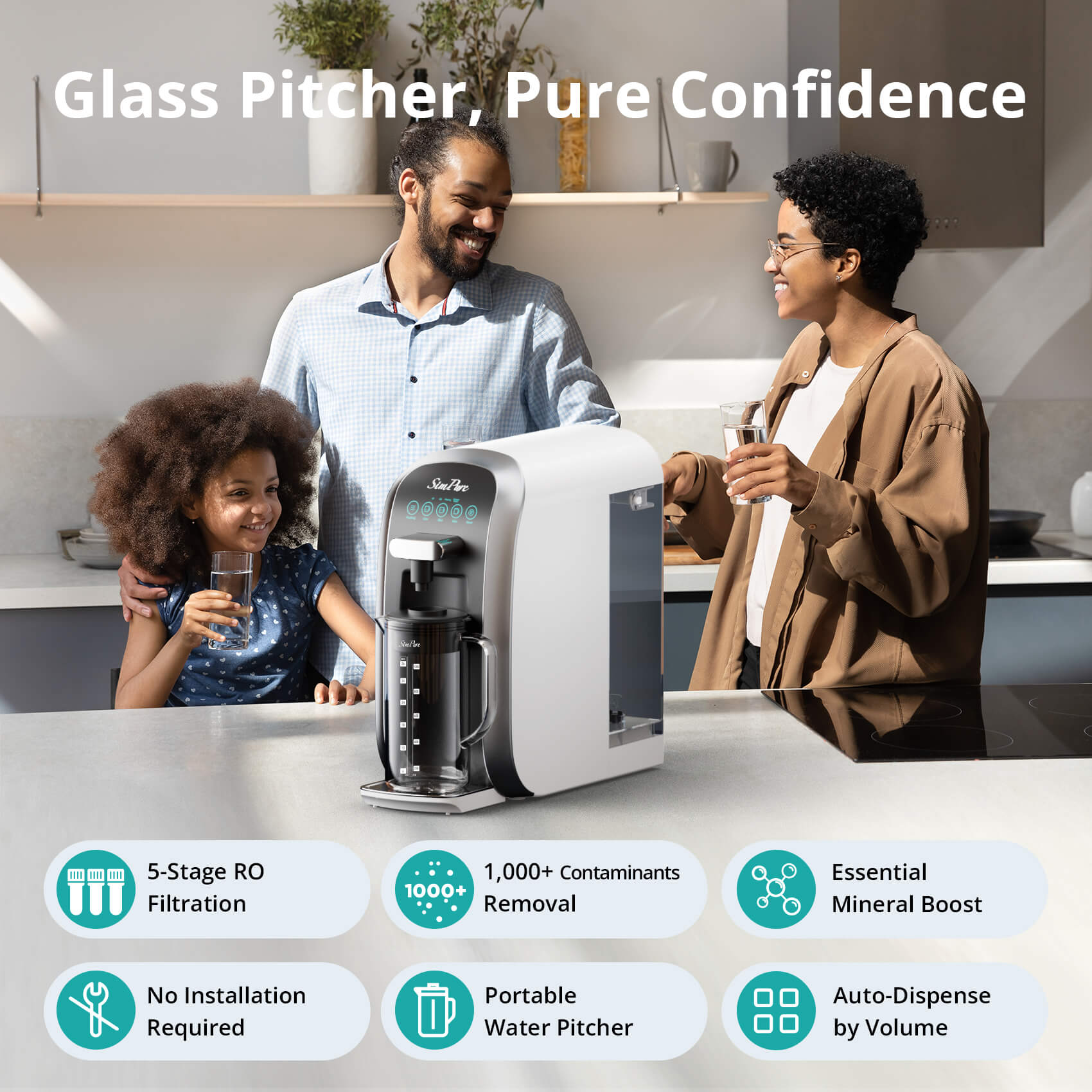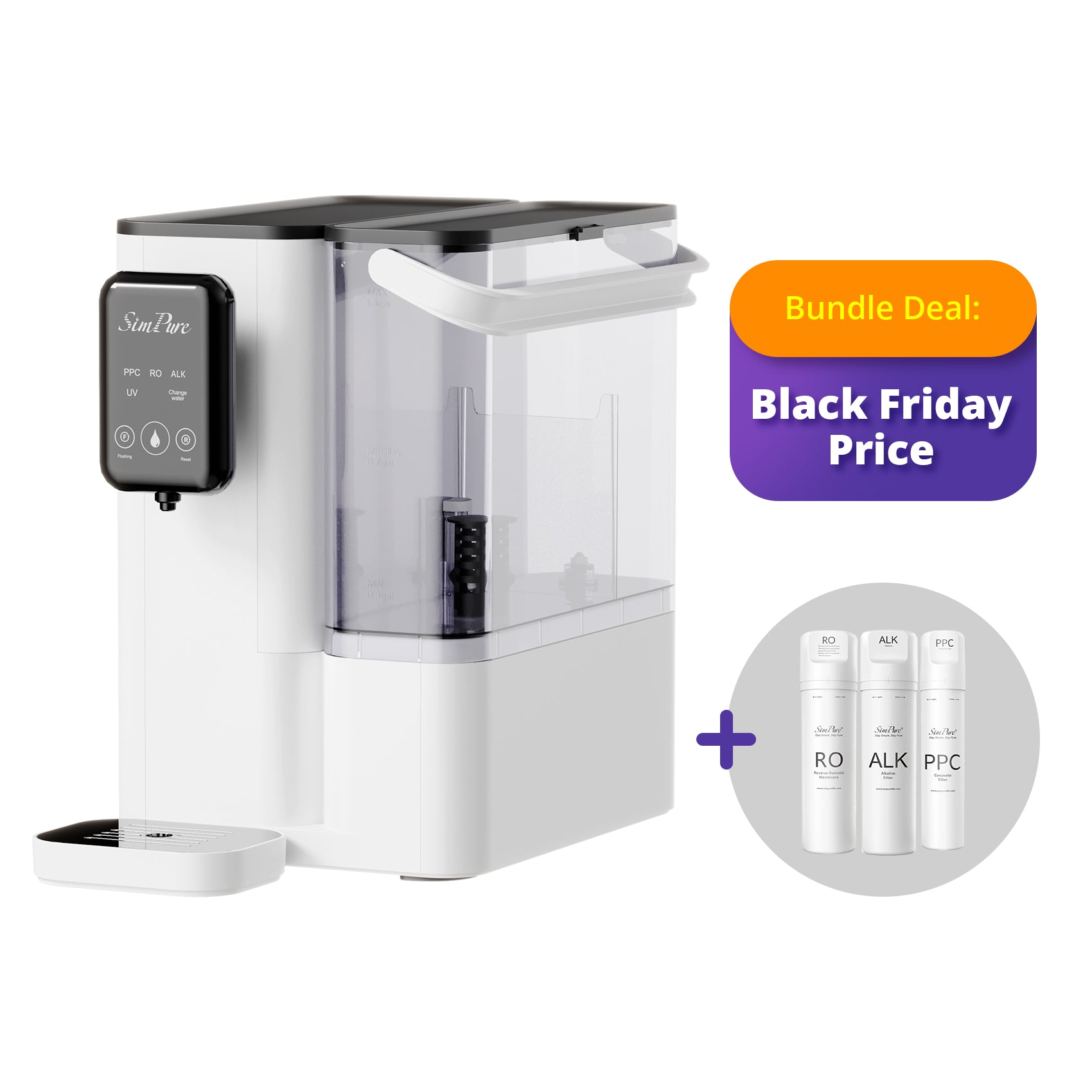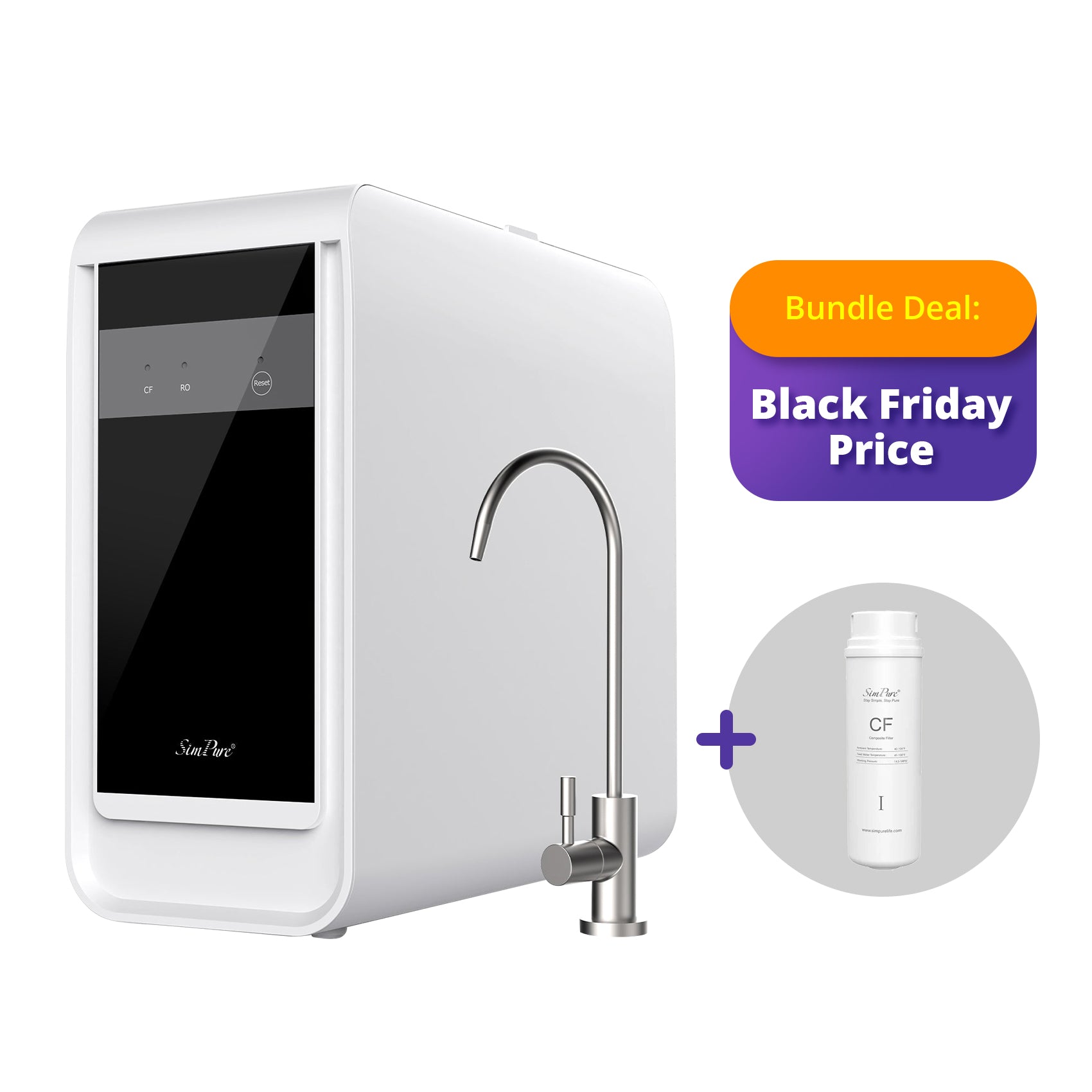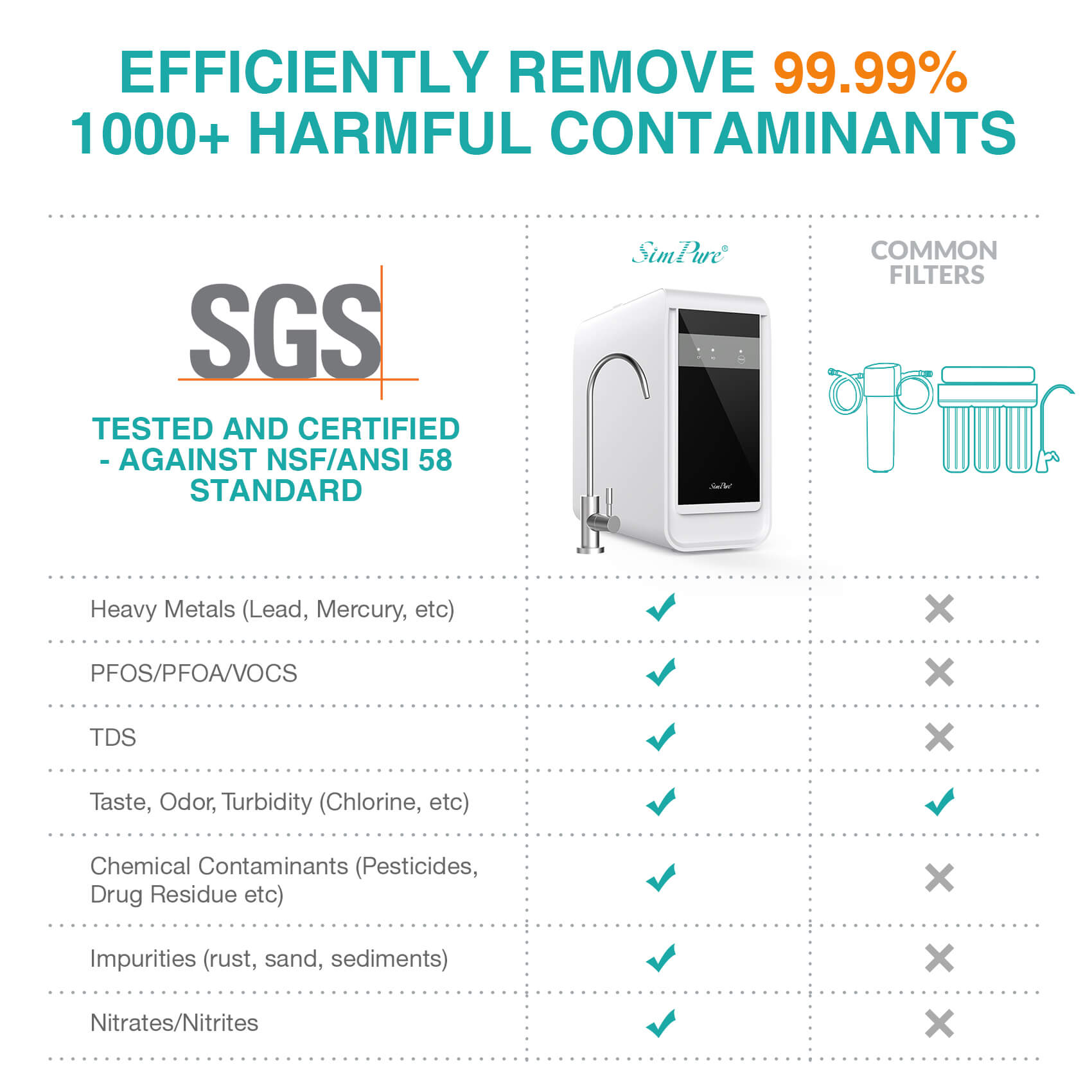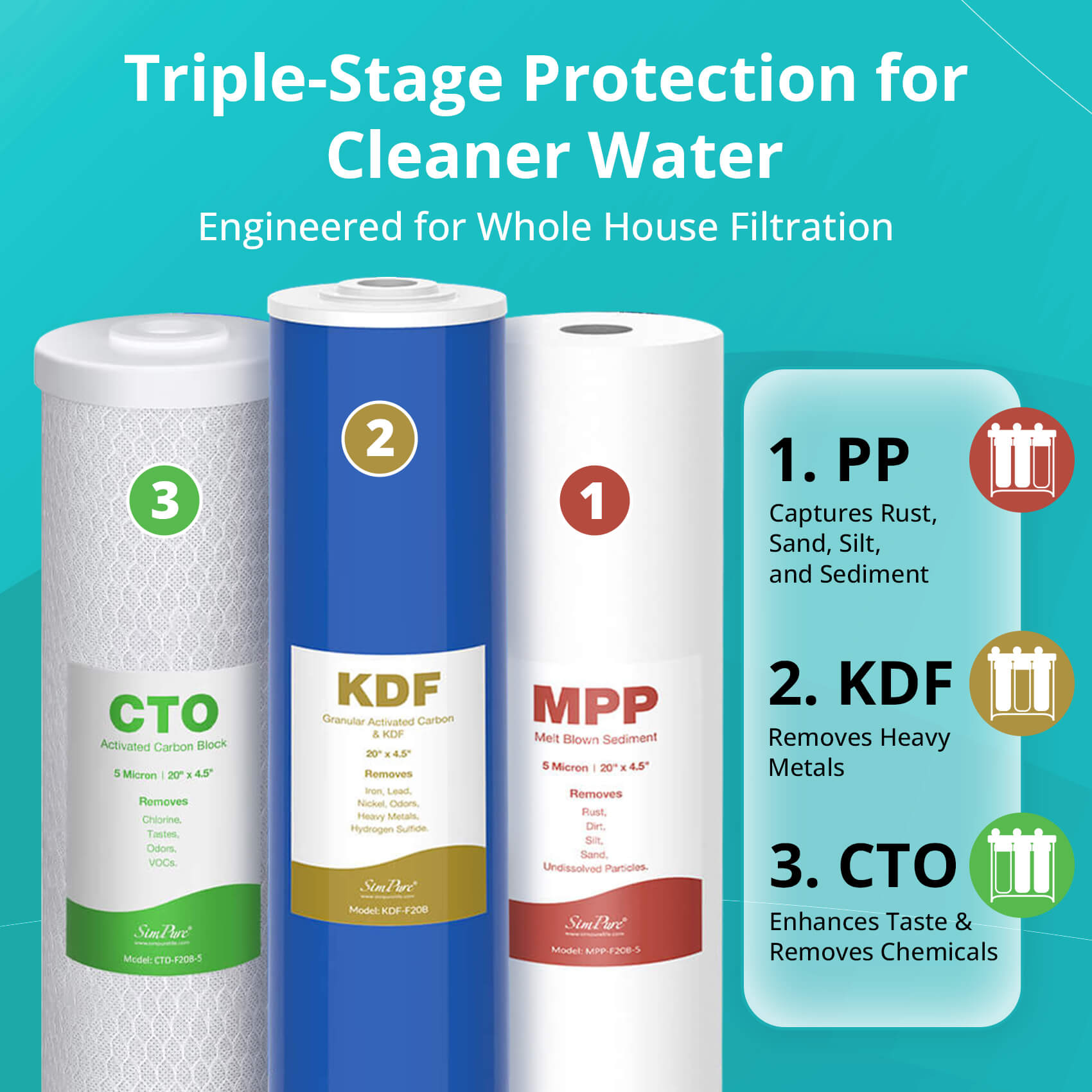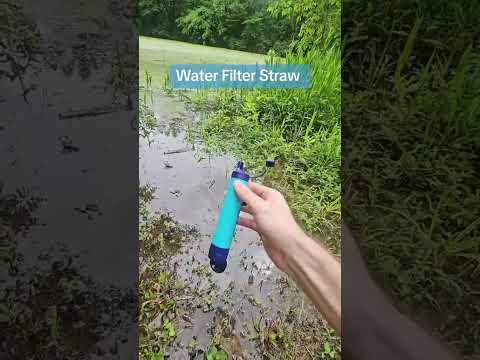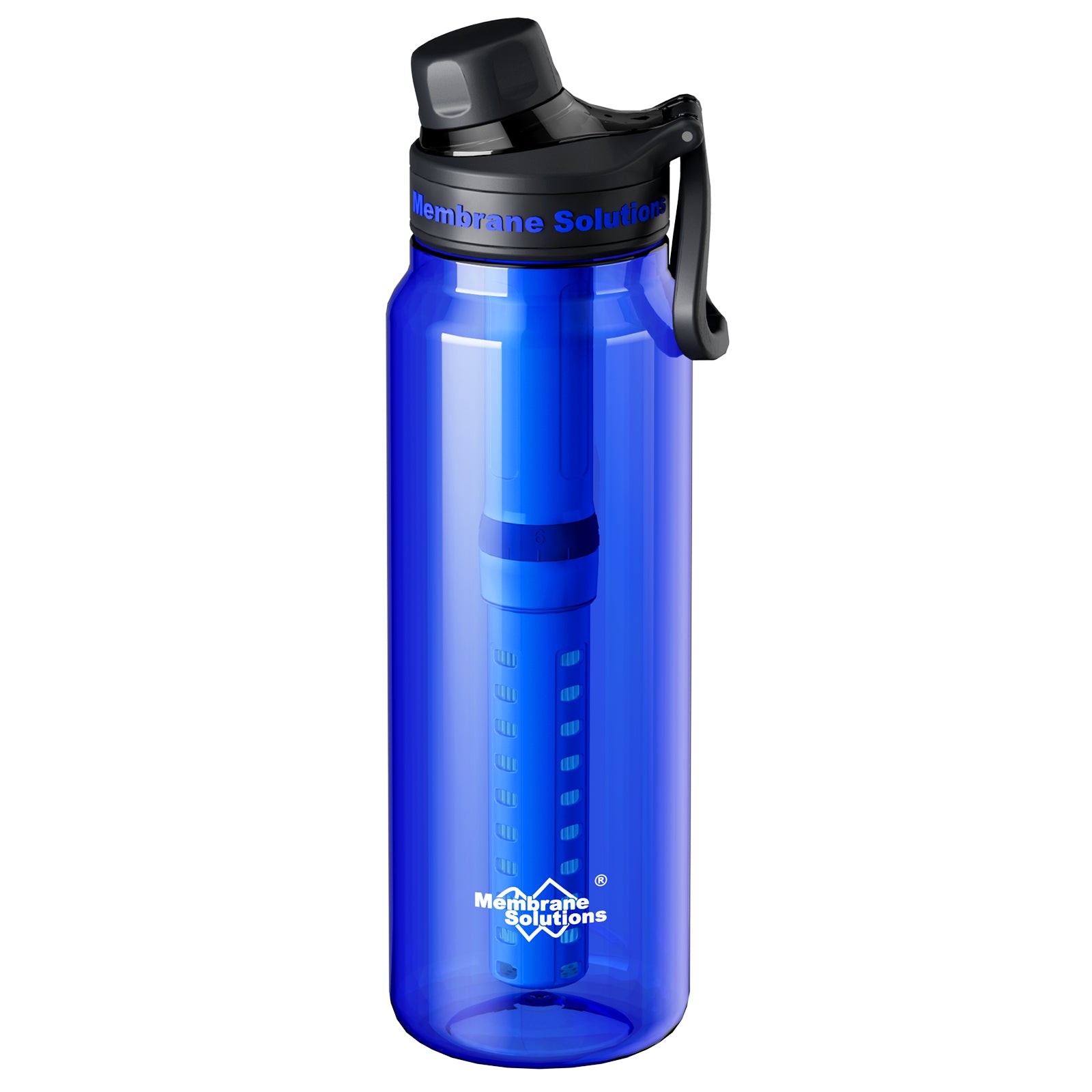If you are searching for ways about how to remove chlorine from water, you gonna read the most useful information in the next few minutes. Chlorine is a very potent chemical commonly used to disinfect swimming pools and drinking water to prevent water-borne diseases, Very useful in keeping water clean. Once in the water, chlorine acts as a disinfectant, removing viruses, bacteria and protozoa from the water. This is why it is commonly used to disinfect drinking tap water and swimming pool water. However, after the water is disinfected with chlorine, some chlorine will remain in it, and most of the chlorine has formed other chemical substances in the water. These chlorine compounds are called residual chlorine.So many people are wondering how to remove chlorine in drinking water?
Why Remove Chlorine From Water?

Chlorine is highly toxic. Whether you're drinking water or swimming in a swimming pool, or raising fish in tap water, you need to be wary of having too much chlorine in your water. The EPA sets a limit of 4 milligrams per liter of chlorine in drinking water, and while chlorine clears the gut of some unhealthy bacteria, it also destroys the good bacteria in the gut. Drinking water with high chlorine content for a long time can cause serious health problems, may cause food allergies, potential birth defects, development of bladder cancer, breast cancer, affect the nervous system, miscarriage, etc. If you don't know the specific chlorine content in youe tap drinking water, read this: how to test chlorine in water at home. Since The harm of chlorine is so serious,we need to know how to get rid of chlorine in tap water?
How to Remove Chlorine From Water?
A number of methods have been shown to be very effective in removing chlorine from water. You can choose how to remove chlorine from water according to your preferred method. There are three commonly used methods for removing chlorine, namely evaporation, filtration, and chemical neutralization. Check the detailed methods below!
1. Evaporation to Remove Chlorine From Water
How to remove chlorine from water naturally? The easiest way to remove chlorine from water is to use evaporation. Because chlorine is considered extremely volatile, it will evaporate without much of a problem. If you don't want to spend money to remove chlorine from your water, then as long as you let the water sit, the chlorine will evaporate, but it will take more time. As for the specific time of how long does it take for chlorine to evaporate from water, it depends on surrounding environment. The higher the temperature, the faster the chlorine vapor evaporates. Evaporation to remove chlorine is a natural solution, and it doesn't cost money.
- Sun exposure method to get rid of chlorine from water
This is the most advocated method. Residual chlorine is a volatile substance that will slowly evaporate by itself. Does sunlight remove chlorine from water? Yes! If conditions permit, you can also expose the water to the sun for a day outside. In this way, the chlorine gas will evaporate and disperse on its own, but it must be properly protected to prevent impurities from falling into the water. Exposure to sunlight can not only remove chlorine, but also disinfect tap water.
- Boiling water: easiest way to remove chlorine from tap water
If there is no sun, heating can also decompose and evaporate some of the residual chlorine in the water. Usually, the simplest and most convenient operation for us is to boil the water in a pot or a kettle, and then open the lid for a period of time, and the chlorine gas will evaporate with the water vapor.

2. Filtration to Remove Chlorine: Best Way to Remove Chlorine From Water
Filtration to remove chlorine can be accomplished using many different filtration methods and systems.
① Reverse osmosis system to remove chlorine in drinking water
The vast majority of water filtration systems work using a reverse osmosis system, which uses a permeable membrane to remove any particles, ions, or impurities from the water. If you have read our previous article Best Water Filter for Chlorine Removal, you will learn why. Chlorine and contaminants in the water are left behind as the water passes through the membrane. While many reverse osmosis systems are designed for industrial purposes, there are also systems that can be installed in homes. This particular method of chlorine removal is very effective and therefore ideal. With automatic operation, the water is softened after filtration is complete. And the installation is very convenient, the installation process only takes a few seconds to complete. Once the water passes through the membrane, it will no longer contain chlorine or harmful pollutants.
②Activated carbon filtration to get rid of chlorine from water
Installing an activated carbon filter like SimPure DB10C-2 is a more suitable method. By making a self-made activated carbon filter device or purchasing an activated carbon water purification device, such as a faucet, a water purifier, a water purification cup, etc., activated carbon filtration is also called adsorption method, and there are many pores on the surface of activated carbon. Using its strong adsorption force, it can effectively get rid of residual chlorine in water. The smaller the particles of activated carbon, the better the chlorine removal effect. Household use of activated carbon to filter water is very effective. We can buy it according to our own needs, but the filter element should be cleaned and replaced frequently after a period of time, otherwise the purpose of purification will not be achieved.

3. Removing Chlorine From Water by Chemical Neutralization
Chemical neutralization involves adding chemicals to the water to remove any chlorine. This special method of removing chlorine from water is considered the most efficient method and is commonly used in grain and winery.
①Potassium bisulfite
Probably the best chemical for chemical neutralization is potassium metabisulfite, which comes in small tablets. Once the tablet dissolves in water, it will effectively neutralize the chlorine before it evaporates.
This technology effectively eliminates chloramines and chlorine. A single piece of potassium metabisulfite can remove chlorine in 20 gallons of water, which means the method is relatively inexpensive. The process is also fast and should be able to eliminate chlorine within minutes.
②Sodium sulfide sulfate
Put the tap water into the storage bucket, immediately add sodium sulfide sulfate to 10 kg of water and add 1 g of soda.Sodium thiosulfate is usually called big soda. It does no harm on the human body and can be used with confidence. Stir to dissolve it evenly to remove chlorine from water.
③Using Vitamin C to remove chlorine from water
Vitamin C is reductive and can be neutralized with chlorine. Mix vitamin C with water at a ratio of 1:1000, put 3-4 pieces of vitamin C in 10 liters of water, and wait until it melts and mixes into a solution, which can easily remove chlorine in the water.

Removing chlorine by evaporation is a slow and effective technique designed to disperse chlorine. The water is filtered by reverse osmosis and activated carbon, which removes chlorine and various other impurities from drinking water. When used properly, filtration methods can purify water from almost all impurities. If you choose chemical purification, adding certain chemicals to the water will neutralize the chlorine. While it may seem dangerous to add other chemicals to the water, once the chlorine in the water is neutralized, they evaporate, ensuring that the water remains healthy and pure.
At present, the use of chlorine to disinfect tap water is inevitable. Nevertheless, we can take corresponding protective measures to remove chlorine from tap water as much as possible, and avoid drinking tap water directly.The harm of chlorine may not be manifested in a short period of time, but ingestion in the body for long time is bad for our health! In addition to the above common methods, there are other methods such as the light method in the air pump or adding an appropriate amount of water stabilizer to quickly remove chlorine. If you want to safely and conveniently remove residual chlorine from water, it is best to buy a household water filter to remove chlorine in drinking water.

